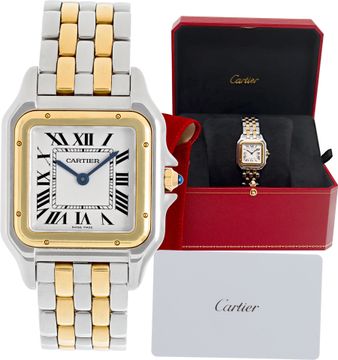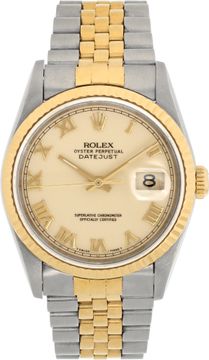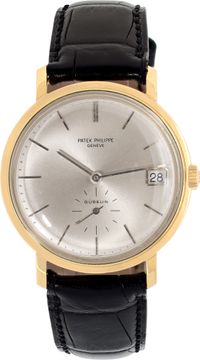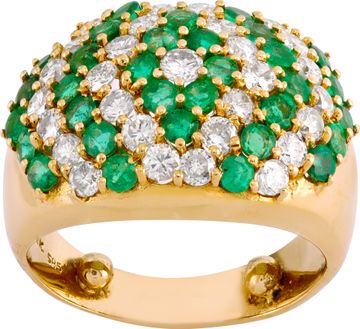Freshwater and Saltwater Pearls: Understanding Cultured Pearl Types
The Different Types of Pearl Jewelry: From Freshwater to Saltwater

Image Link: https://www.grayandsons.com/s520729-akoya-pearls-75-x-8mm-necklace-with-d/
Pearls have long been associated with elegance and timeless beauty. They have adorned royalty, graced wedding ceremonies, and become cherished heirlooms passed down through generations. One of the most intriguing aspects of pearls is their diversity. From the serene lakes producing freshwater pearls to the deep seas yielding exotic saltwater varieties, each pearl type brings its unique charm and allure to jewelry design, highlighting the difference between freshwater and saltwater. In this blog, we’ll explore the different types of pearls and the exquisite jewelry crafted from them. Along the way, we’ll suggest visuals to capture their beauty, including stunning images of cultured saltwater pearls.
Freshwater Pearls: Versatile and Affordable

Image Link: https://www.grayandsons.com/s519946-marco-bicego-fresh-water-pearls-and-v/
Freshwater pearls are cultivated in mussels that inhabit freshwater lakes, rivers, and ponds, mainly in China, and are a popular choice for freshwater pearl necklaces. These pearls are renowned for their wide range of shapes, colors, and sizes. Unlike saltwater pearls, freshwater pearls have a thicker nacre, making them more durable and lustrous; freshwater pearls come in various shapes and sizes. Jewelry crafted from freshwater pearls often includes necklaces, bracelets, and earrings. Their affordability allows designers to experiment with bold and intricate designs. Popular choices are multi-strand necklaces and colorful pearl earrings that highlight their natural hues, from white and pink to lavender.
Akoya Pearls: The Classic Choice
Akoya pearls are the quintessential saltwater pearls, prized for their perfectly round shapes and mirror-like luster. Cultivated in Japan and China, Akoya pearls, including the exquisite white akoya pearl, are produced by the Pinctada fucata oyster, known for their classic beauty as cultured saltwater pearls. They are smaller than other saltwater varieties, typically ranging from 6mm to 8mm, but what they lack in size, they make up for in elegance. Jewelry featuring Akoya pearls is often simple yet sophisticated. A classic Akoya pearl necklace or a pair of stud earrings are staple pieces in any jewelry collection. These pearls also come in subtle shades of white, cream, and sometimes even a hint of silver or pink.
Biwa Pearls: The Japanese Originals

Image Link: https://www.grayandsons.com/s520321-akoya-pearl-95-x-10mm-and-diamonds-ri/
Biwa pearls are named after Lake Biwa in Japan, where they were originally cultivated, representing a significant type of cultured freshwater pearl. These freshwater pearls are known for their elongated, irregular shapes and radiant luster. While production in Lake Biwa has declined, the term "Biwa pearls" is often used to describe similarly shaped pearls from other regions. Biwa pearl jewelry often incorporates their unique shapes into artistic and unconventional designs. These pearls are commonly used in layered necklaces or mixed-material bracelets.
Tahitian Pearls: Exotic and Dark

Image Link: https://www.grayandsons.com/s520695-tahitian-pearl-15-x-1550mm-and-diamon/
Tahitian pearls are cultivated in the black-lipped oyster (Pinctada margaritifera) in the warm waters of French Polynesia. Known for their exotic black hues, Tahitian pearls exhibit a stunning array of colors, including green, blue, purple, and peacock overtones, making them one of the most sought-after types of saltwater pearls. These pearls make a bold statement and are often used in contemporary jewelry designs. A Tahitian pearl pendant or a Tahitian ring paired with diamonds create a striking contrast and exude luxury. Tahitian pearls are ideal for those looking to make a dramatic impression.
Cortez Pearls: The Jewel of Mexico
Cortez pearls are cultivated in the rainbow-lipped oyster (Pteria sterna) in the Sea of Cortez, located off the coast of Mexico. These pearls are highly prized for their iridescent colors, which can include shades of green, purple, and bronze. Cortez pearls are also eco-friendly, as their cultivation process focuses on sustainability, making them a responsible choice among black pearls. Jewelry crafted with Cortez pearls is often as unique as the pearls themselves. Their
South Sea Pearls: The Queen of Pearls

Image Link: https://www.grayandsons.com/s521105-glamorous-south-sea-pearl-necklace-wi/
South Sea pearls are among the largest and most luxurious pearls available, often more expensive than freshwater pearls. Cultivated in the silver- or gold-lipped Pinctada maxima oyster, these pearls are primarily produced in Australia, Indonesia, and the Philippines. South Sea pearls are celebrated for their silky luster, large size (ranging from 9mm to 16mm), and natural colors, which include shades of white, silver, and gold. Due to their size and rarity, South Sea pearls are often the centerpiece of high-end jewelry designs. From opulent necklaces to statement rings and earrings, South Sea pearl jewelry embodies elegance and sophistication.
Keshi Pearls: Organic and Unique
Keshi pearls are a byproduct of the pearl culturing process and are typically 100% nacre, as they form without a nucleus, distinguishing them from other types of cultured pearls. Their organic shapes and natural luster make them highly prized by jewelry designers seeking unique and unconventional designs. Keshi pearls can be found in both freshwater and saltwater varieties, offering a range of colors and sizes, and are often considered some of the most unique natural pearls. Jewelry made with Keshi pearls is often artistic and avant-garde. Whether it’s a free-form necklace or asymmetrical earrings, these pearls stand out for their individuality, particularly when showcasing one pearl at a time.
Mabe Pearls: The Half-Pearl Elegance

Image Link: https://www.grayandsons.com/s518713-mabe-pearl-ring-and-round-brilliant-d/
Mabe pearls are hemispherical pearls cultivated on the inner shell of an oyster rather than within its soft tissue. This unique formation results in a dome-shaped pearl with a flat back, making them ideal for jewelry like earrings, rings, and brooches, similar to round pearls at a time. Mabe pearls are often larger and more affordable than their fully round counterparts, making them an excellent choice for bold statement pieces, especially in the realm of cultured freshwater pearls. They come in various shades, including white, cream, and pastel tones.
Baroque Pearls: Embracing Imperfection

Image Link: https://www.grayandsons.com/s520225-baroque-south-sea-pearl-14-x-18-mm-op/
Baroque pearls are known for their irregular shapes, which can range from slightly off-round to completely asymmetrical, showcasing the diversity found among freshwater and saltwater pearls. These pearls can be either freshwater or saltwater, and their distinctive forms give them a contemporary and artistic appeal. Baroque pearls are a favorite for statement necklaces, bracelets, and earrings, often used alongside cultured freshwater pearls. Their organic shapes pair beautifully with contrasting materials like leather, metal, or even raw gemstones, resulting in one-of-a-kind designs that often feature natural pearls.
Conch Pearls: The Rare Gem
Conch pearls are not true pearls but are formed by the Queen Conch mollusk in the Caribbean, unlike cultured pearls which are formed by oysters. These pearls are rare and valuable due to their vibrant pink, peach, or salmon hues and unique flame-like patterns, especially in the context of cultured saltwater pearls. Unlike other pearls, conch pearls are non-nacreous, giving them a porcelain-like finish. Conch pearl jewelry is often custom-designed to showcase their beauty, emphasizing the uniqueness of each natural pearl. Rings and pendants are popular choices, as they allow the pearl to take center stage. These pearls are a dream for collectors and enthusiasts of rare gems. Mesmerizing hues make them perfect for pendants, rings, and earrings that highlight their natural beauty.
Which Pearl Jewelry Should You Choose?
Choosing the right pearl jewelry depends on your style, budget, and occasion. Whether you prefer the affordability and variety of freshwater pearls, the exotic allure of Tahitian pearls, or the opulence of South Sea pearls, there’s a perfect pearl for everyone. For special occasions, consider investing in high-quality Akoya or South Sea pearls, while freshwater pearls and Keshi pearls are excellent for everyday elegance and artistic designs. Baroque pearls are ideal for those who want to make a bold statement, as their unique shapes create eye-catching, one-of-a-kind pieces. Additionally, rare pearls like Conch or Cortez pearls are perfect for collectors or anyone seeking a truly extraordinary addition to their jewelry collection. For the selling or purchasing of pearl rings, pearl necklaces, pearl earrings, and all pearl jewelry, we offer great prices for them.
Where to sell your Pearl Jewelry
If you're interested in selling, consigning, or trading in any of your pearl jewelry, our online buying platform, SellUsYourJewelry, is here to help. As a reputable buyer of fine jewelry and high-end watches, we provide a seamless, transparent, and fair process to sell any of your vintage timepieces. Visit our website or reach out today to discover how you can confidently sell your luxury piece.
Exquisite Pre-owned Timepieces and Jewelry: New Arrivals for November 24, 2024
NEXT ARTICLE
Sparkling Through the Season: Styling Pre-Owned Tiffany Jewelry for Holiday Festivities (November 23, 2024)






